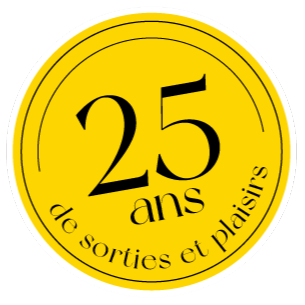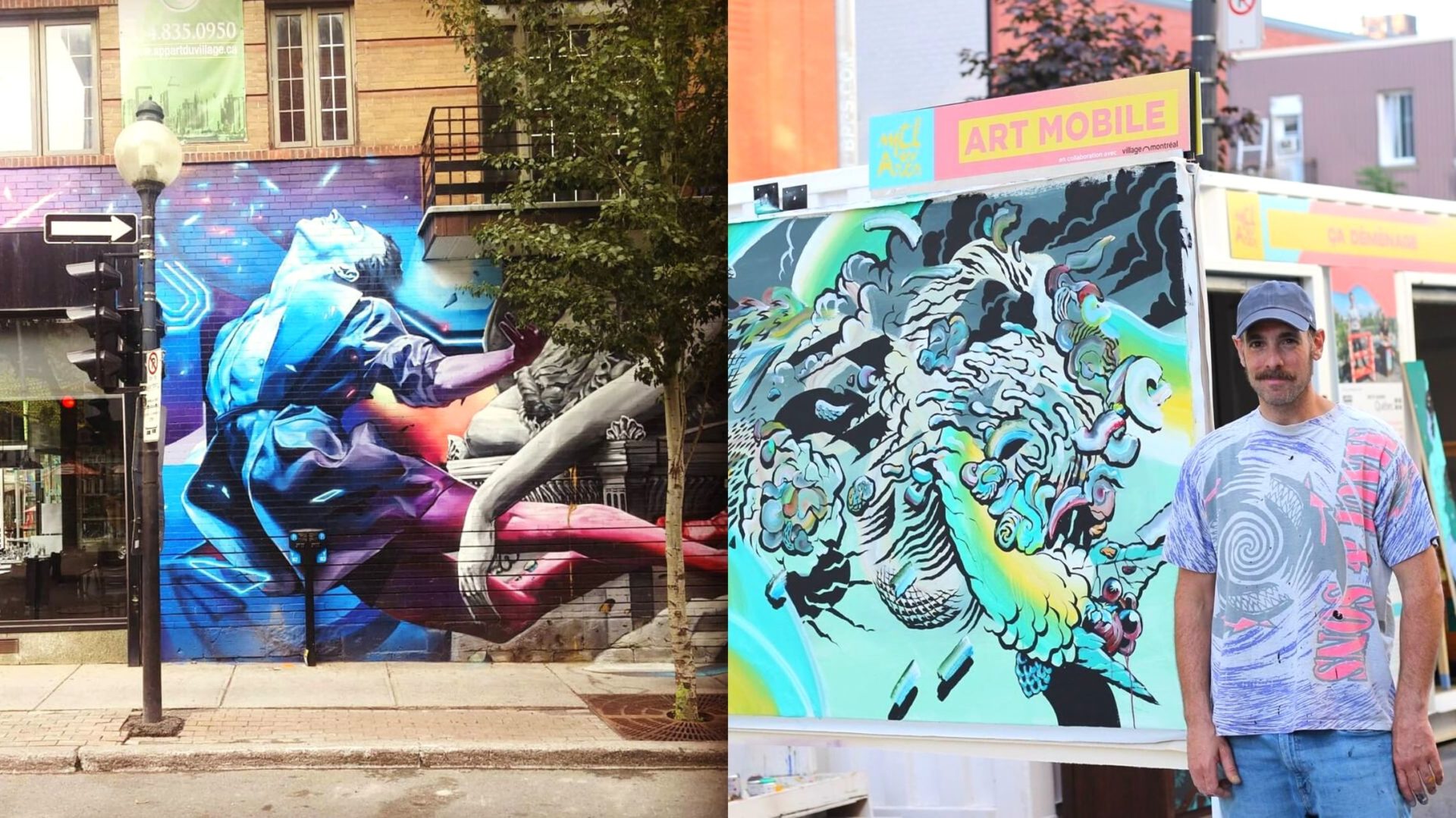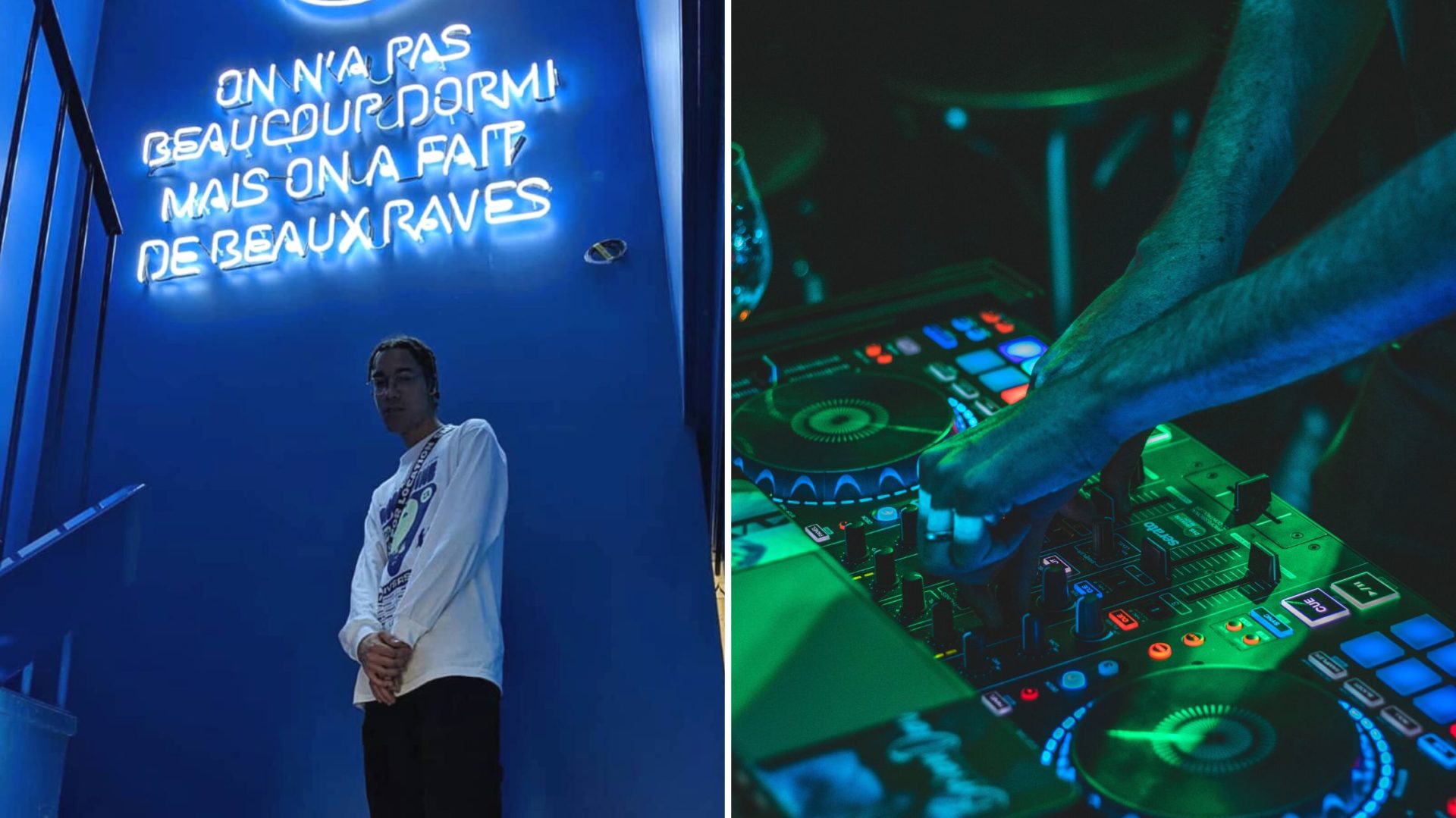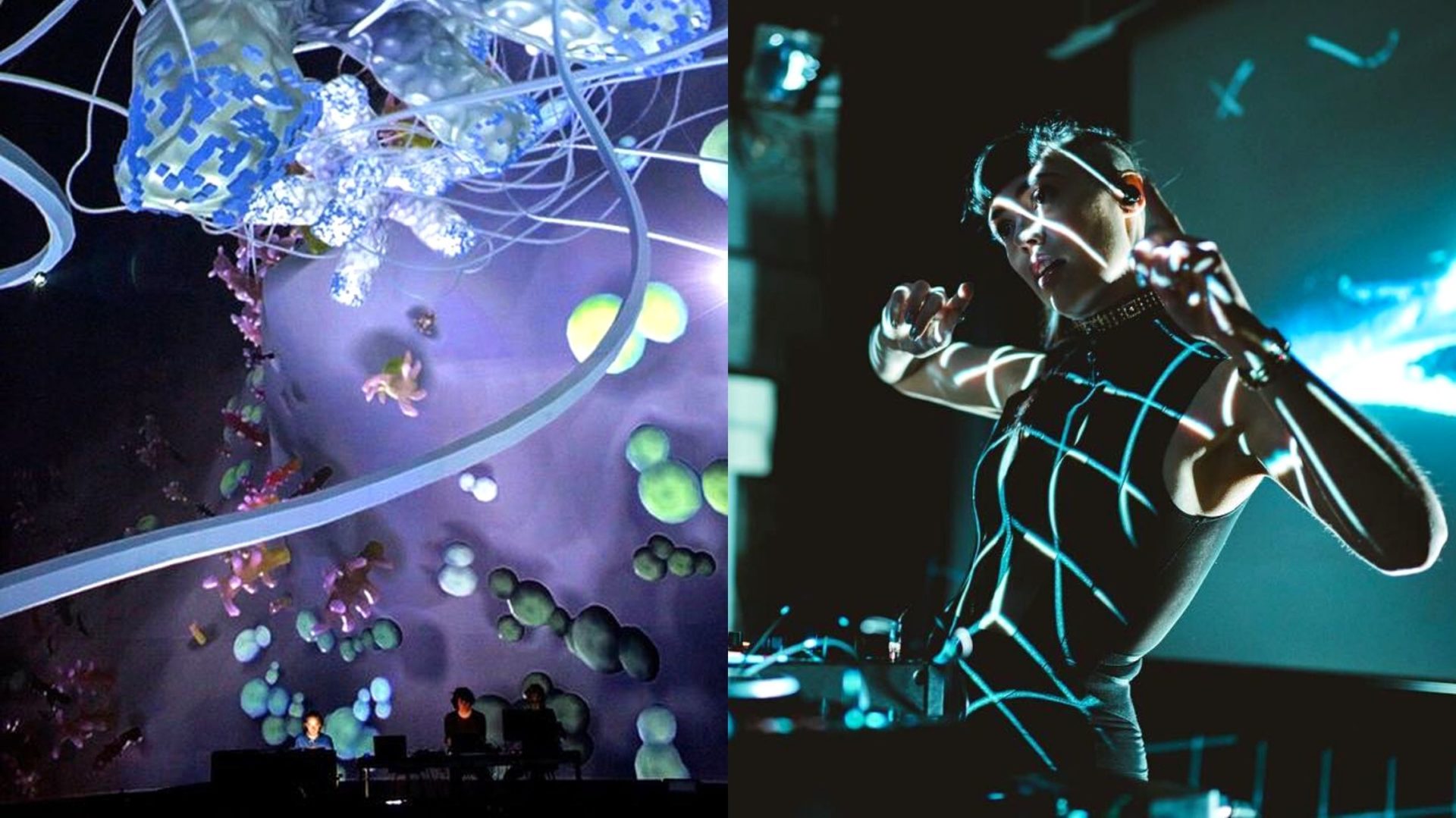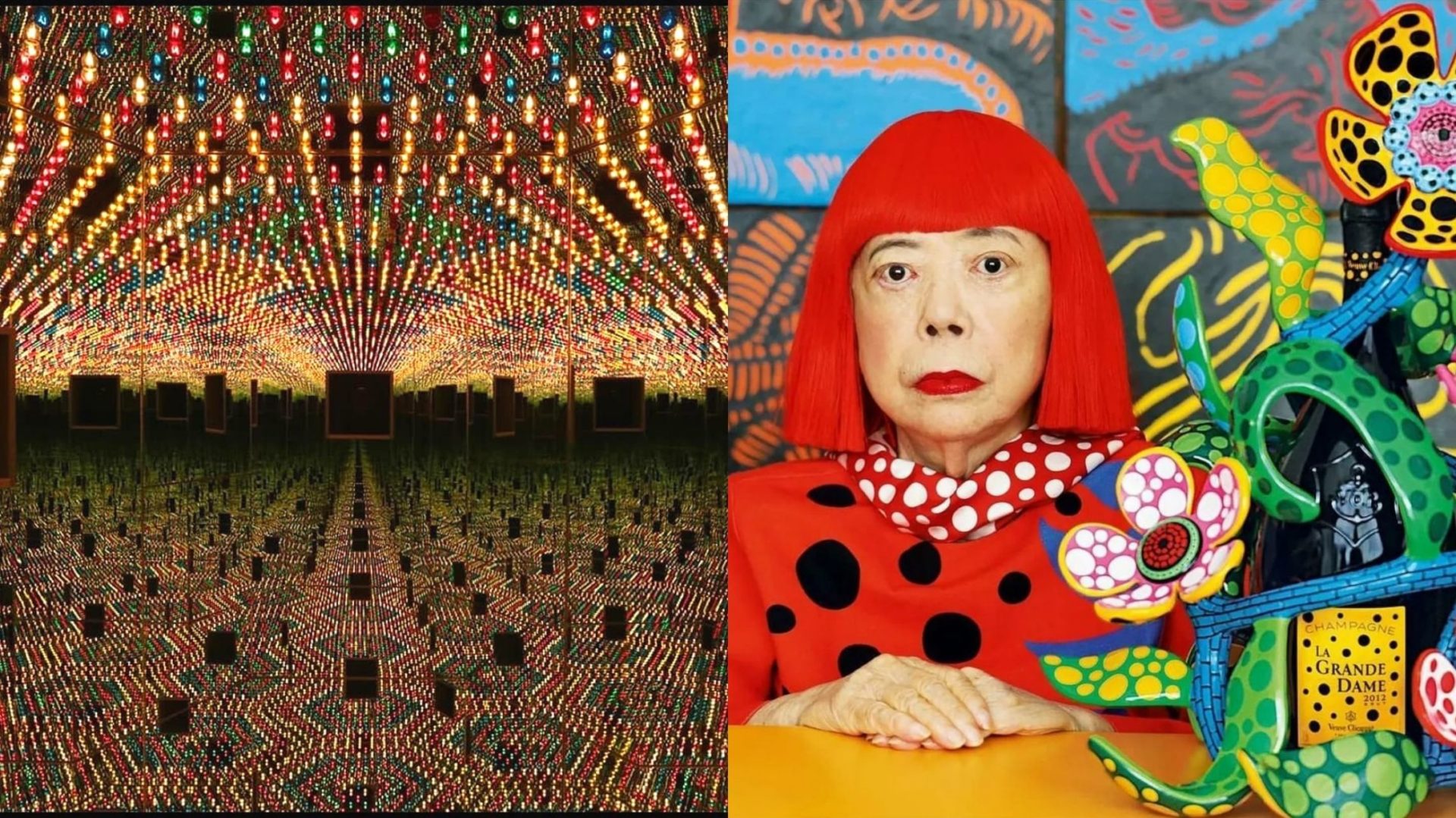Osheaga poster exhibit feeds our craving for indie rock (and Arcade Fire) collectibles
Auteur: Michael-Oliver Harding
In the late sixties, the poster scene exploded along with psychedelic designs, Warhol’s publicized penchant for screen prints and all those revolutionary Woodstock-minded music gatherings. And then, it sort of died out. Since the 2000s, thankfully, the indie music scene has enjoyed a renaissance of these limited-edition, handmade gig posters. Karkwa, Gotye, M83, Feist, Tokyo Police Club: you name your favourite Pitchfork-endorsed act, they’ve nearly all commissioned graphic designers to conjure up a few of these hard-to-snag collectors’ items.
For the second year straight, Osheaga is presenting a wide-ranging exhibit in celebration of the designers who immortalize our most treasured concert memories in precious silkscreen format. NIGHTLIFE.CA spoke with Music on Paper curator Pat Hamou – an illustrator who’s designed special prints for The Black Keys, Blonde Redhead and The Kills – about the impact of SXSW on poster design, the exhibit’s special nods to the Polaris Prize and to the Mile-End’s undisputed heroes, Arcade Fire.
Credit: Susan Moss
First off, how do the prints on display differ from traditional gig posters?
They’re all limited edition; often a given design will only have 50 or 100 posters in existence. They’re all signed, numbered and handmade. They’re generally only available on the night of the show at the merch table. They become fetish objects of sorts.
From what I gather, artists are often granted carte blanche and lots of creative freedom for their designs, right?
Absolutely. Bands do have to approve the design, but it’s a very open creative process. Most musicians don’t dictate what they want. They say "just run with it". As you’ve noticed, none of the posters feature band photos or logos; it’s all from the artist’s perspective. They become personal expressions, both from the band and the designer.


Credit Music on Paper: Susan Moss
You used to work at Greenland as well as Ninja Tune’s Montreal branch, so you’ve perhaps been able to observe the industry shift that brought poster design back into the limelight. How would you explain it?
In the last ten years, the whole market has really elevated to a whole new level, and I think that a lot of it has to do with South by Southwest (SXSW). They have their Flatstock festival, a huge poster convention held a few days before the music portion actually begins, where all the graphic designers get together and have their prints in a room for sale. So there’s this new appreciation for that end of the music industry.
I also think the website gigposters.com, started back in 2001 by Calgary-based Clay Hayes, is partly responsible. Hayes decided it was time to catalogue all the great posters that were being done, so he launched his website. It’s still going strong today – everyone can upload their work to the site, there’s no jury.
It’s also quite striking that pretty much all bands featured in the exhibit, such as those included as part of your Polaris Prize series, operate in the indie music realm. Do the two go hand in hand?
Yes, the vast majority of posters being done are for indie bands. There’s very little being done for mainstream bands, except maybe for Dave Matthews and Pearl Jam. It ranges from small-level bands to Arcade Fire, but remains very hands-on and independent-oriented.

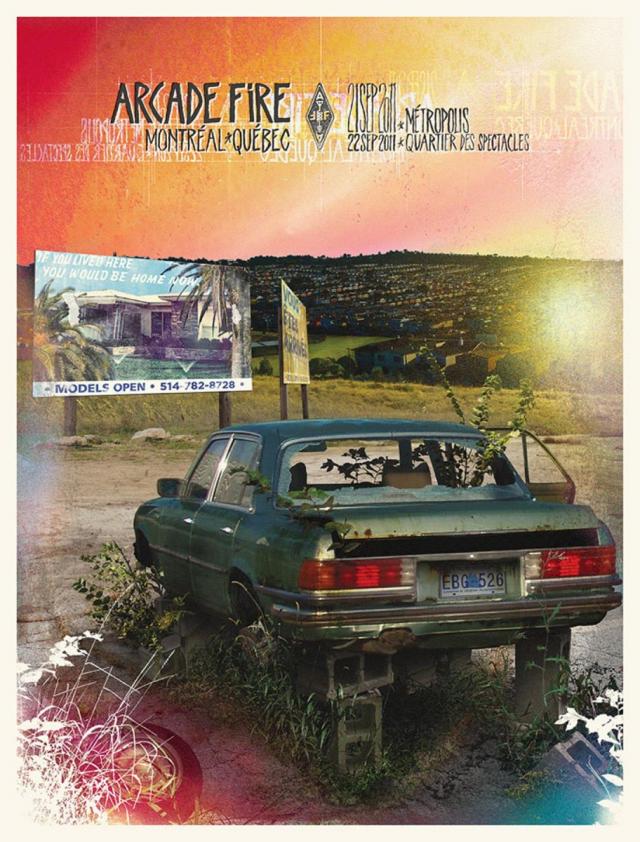
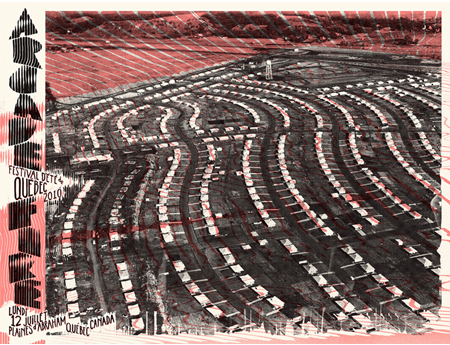
Arcade Fire series // Burlesque of North America
You invited Minneapolis graphic arts studio Burlesque of North America back to showcase a 10-poster sampling of their work with Arcade Fire over the years. Beyond the obvious hometown connection, what struck you most about their design?
They’re pretty unique both in terms of subject matter and printing technique. I thought it would be interesting to see a whole crop of their AF posters, because very few people see them here, and they’ve designed over 40 for the band. Both the band and the design studio met early in their respective careers. Arcade Fire was still playing small clubs and Burlesque had done a poster for a show of theirs in Chicago. The band really responded to the poster, got in touch, the relationship took shape from there, and is still going strong to this day.
Music on Paper
Until July 22
Galerie Le 4220 du Saint-Jean-Baptiste | 4220 Drolet
Osheaga Music and Arts Festival | August 3-5 at Parc Jean-Drapeau | osheaga.com
